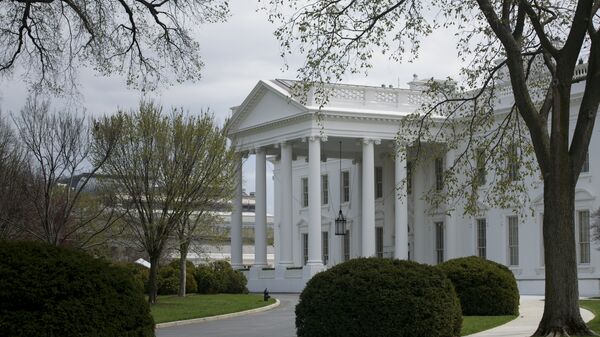Kristian Rouz – US President Donald Trump is set to initiate the first step of his fiscal reform on Tuesday by asking Congress Republicans to curb federal budget expenditures or certain articles of healthcare and social programs. The move will affect the 2018 federal budget and is designed to compensate for the losses in budget revenues stemming from the individual and corporate income tax cuts.
The budget proposal might falter due to partisan politics in Washington as certain lawmakers from both major parties have voiced their opposition to the spending cuts. Trump’s proposal would eliminate, among other programs, also those devised by his peers from the Republican Party. However, with the Republican majority controlling the Congress and, therefore, the federal budget, and the GOP being generally committed to curbing budget deficits, this initial stage of Trump’s fiscal reform has solid chances to pass.
Trump says his proposal would allow the White House to eliminate the budget deficit in ten years, and undertake a wide spectrum of economic and administrative reforms without adding to the US government debt. The broader tax reform plan has not yet been announced in detail.
Major cuts will affect Medicaid, with some $800 bln in funding of the low-income healthcare services subject to revocation. Another $192 bln will be saved on the EBT, or food stamp program, as the White House suggests there is little evidence the Supplemental Nutrition Assistance Program (SNAP) has helped to relieve the pressures of food costs on the low-income households.
In return, the Trump administration, aside of cutting individual income taxes, is releasing low-income households from paying taxes, with single people earning less than $25,000, and married couples making less than $50,000 not owing any income tax.
"We’re no longer going to measure compassion by the number of programs or the number of people on those programs," Mick Mulvaney, budget director of the Trump administration, said. "We’re going to measure compassion and success by the number of people we help get off those programs and back in charge of their own lives."
Partisan politics have, however, produced certain controversy ahead of the discussion of the budget proposal on Tuesday, with the Democrats being firmly opposed to the letter and spirit of the spending cuts proposed, and certain Republicans trying to vindicate the articles of expenditures proposed and enacted by the GOP.
Aside of the £.6-trillion savings on budget spending cuts, the Trump administration expects a roughly $2-trillion boost in budget revenues produced by the accelerated economic growth and the expansion in tax base. Another $593 bln in budget savings comes from the reduction in war funding, and a repeal of Obamacare would save the federal government another $250 bln over 10 years. The White House is also taking a tougher stance of student loans, a rather troubled segment of the US debt market, which the administration suggests must be backed by the graduates’ or dropouts’ earnings, not federal assistance.
New domestic spending will include $25 bln for parental leave, the expansion of the Pall Grant program for low-income students, and increased spending in some federal agencies, including the Department of Homeland Security (plus $3 bln) and Department of Defense (plus $6 bln).
Despite the White House’s claims the fiscal reform is revenue neutral, the Congress has doubts and questions regarding, primarily, the gains in federal revenues produced by quicker economic growth.
"While we appreciate the administration's focus on reducing the debt, when using more realistic assumptions, the president’s budget does not add up," Maya MacGuineas, head of the bipartisan Committee for a Responsible Federal Budget.
Whilst it is impossible to precisely predict the budget gains from economic growth over the coming 10 years, the Trump-proposed budget reductions of $3.6 trln over the period far exceed the planned budget additions of $730 bln. This means the federal government can afford losing up to $2.8 trln in tax revenues because of the tax cuts. According to the estimates by Tax Foundation, Trump’s tax cuts will produce a $2.6 to $3.9 trln hole in federal budget revenues.
However, such a net loss of money would only happen under zero on negative economic growth over the coming ten years, whilst any above-zero growth would produce increased revenues, which generally supports the view of the plan as tax neutral.



